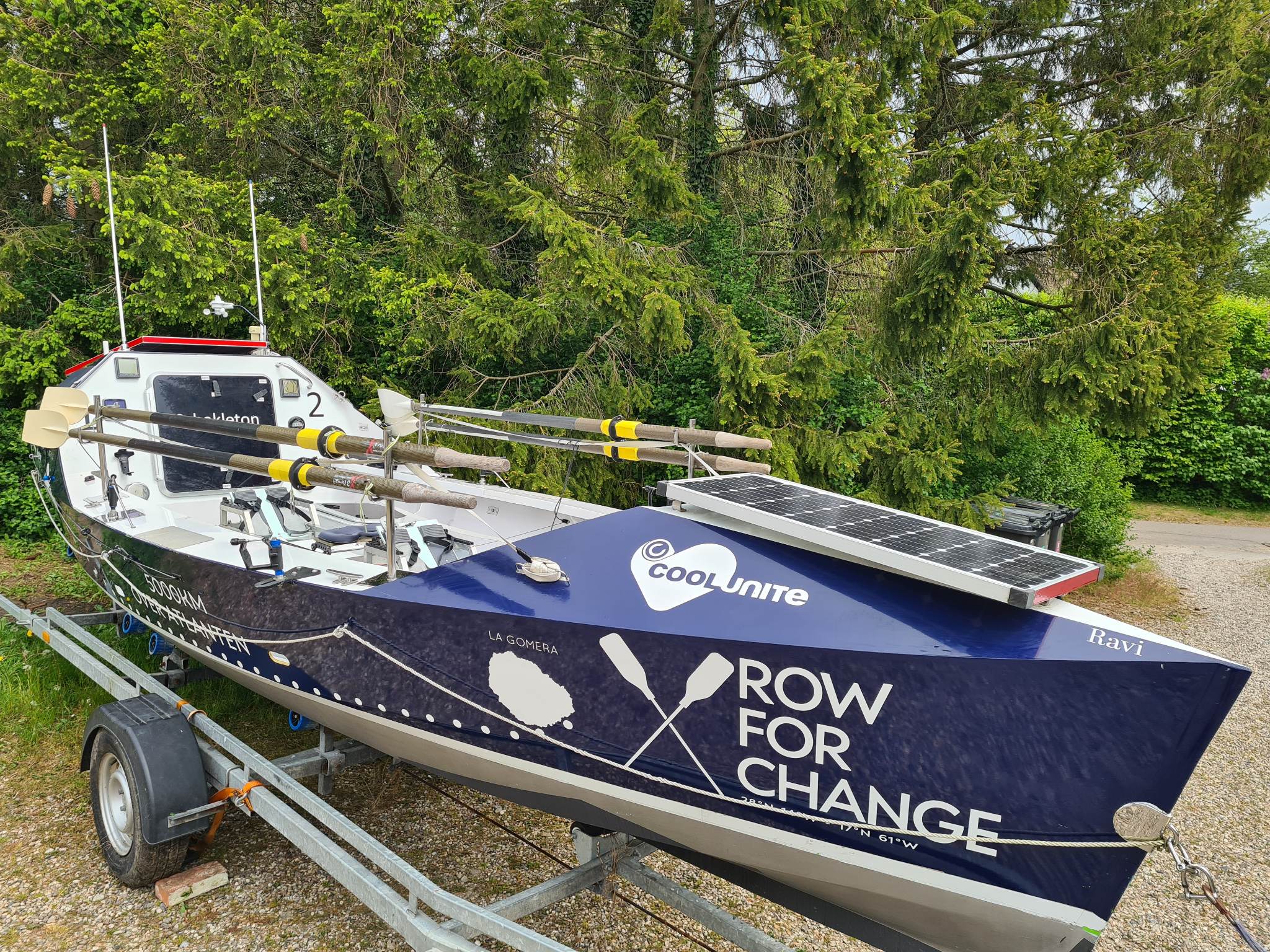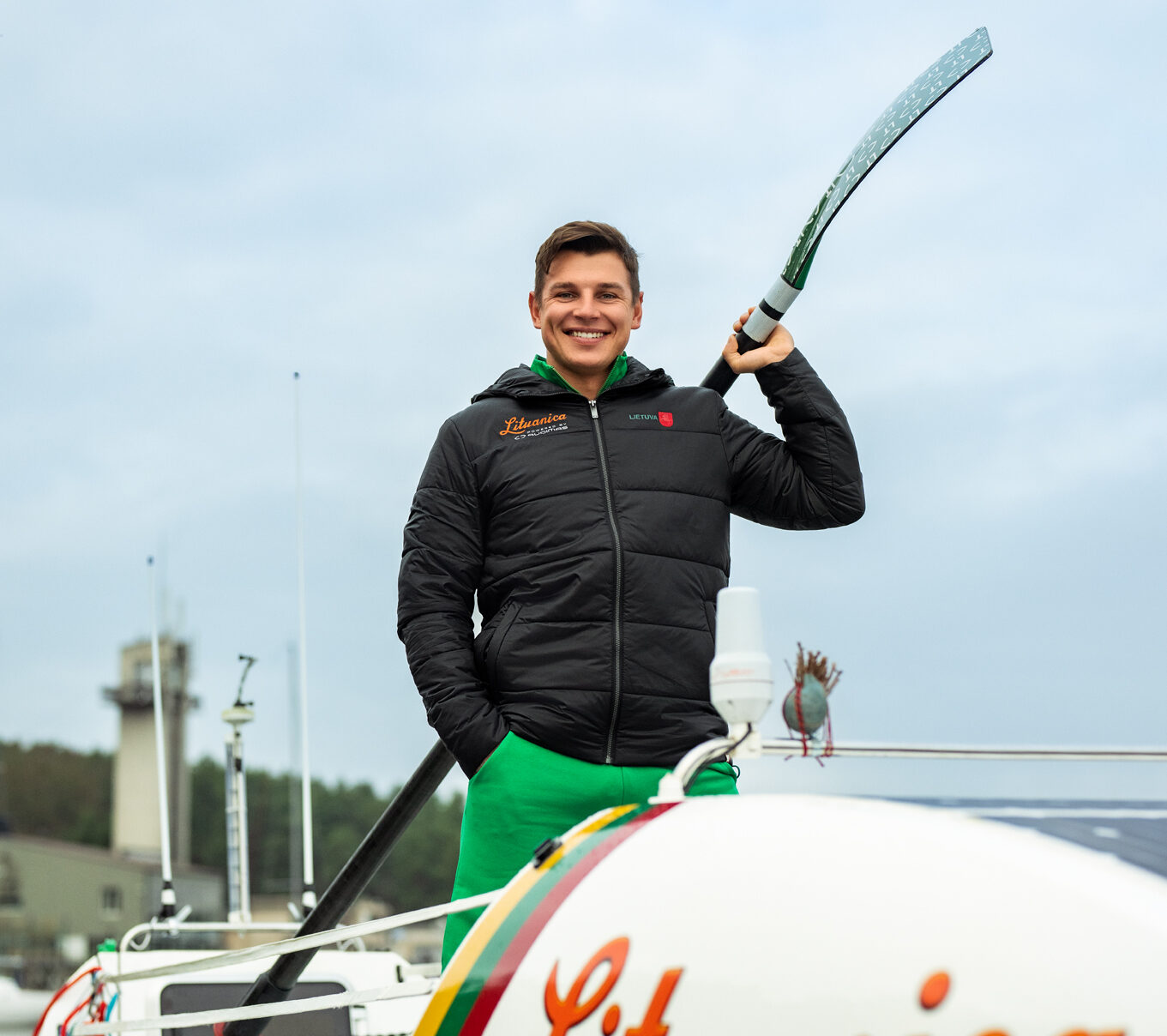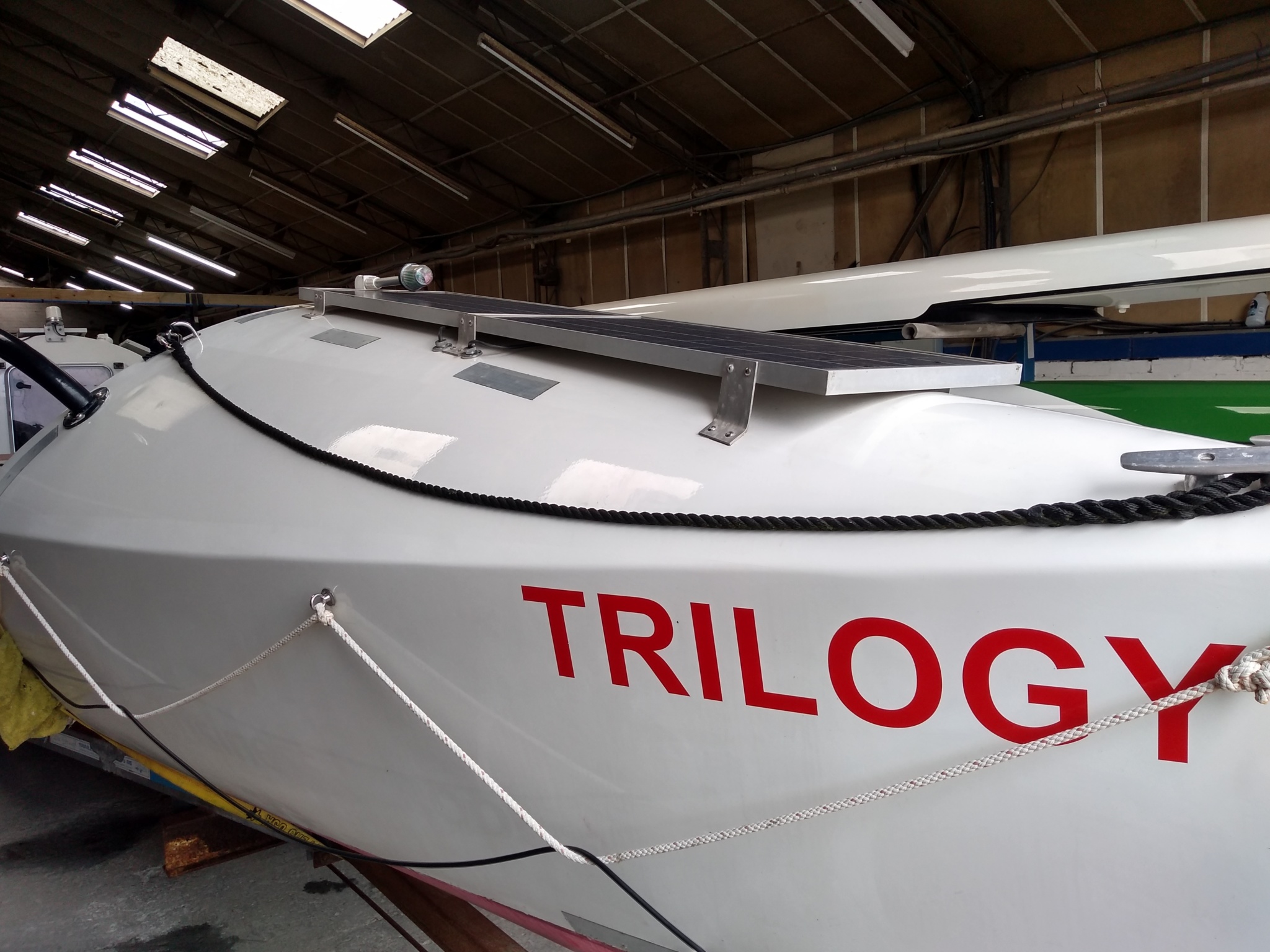"How did we get where we are today and how achievable is it to row across an ocean?"
The early days of Ocean Rowing
 1896 – North Atlantic Ocean
1896 – North Atlantic Ocean 
The first crew to successfully manage this great feat were Norwegians, George Harbo and Frank Samuelsen who, in June 1896, rowed their boat “Fox” East across the North Atlantic Ocean from New York City to the Scilly Isles off the southern tip of the United Kingdom in 55 Days and 13 hours.
Fox was an open topped wooden rowing boat with nothing but a tarpaulin to sleep beneath during the off shifts. This was a time before salt water de-salinators and freeze dried rations so they had to pack what they could carry and rely on the charity and brotherhood of the sailors aboard passing vessels in the busy shipping lanes of the day who must have been astonished at the site of a small rowing boat, mid Atlantic.
 1966 – North Atlantic Ocean
1966 – North Atlantic Ocean 
It would be 70 years before another successfully attempt was made to row across an ocean, once again it was the North Atlantic, this time from Cape Cod to the Aran Isles with Englishmen, John Ridgway and Chay Blythe who spent 90 days aboard their boat “English Rose”.
 1969 – North Atlantic Ocean
1969 – North Atlantic Ocean 
In 1969 the Atlantic was taken on by the first solo rower, John Fairfax, but this time John rowed West out of the Canary Isles aboard “Britannia” taking 180 days to reach Hollywood Beach, Florida, USA.
 1971 – Indian Ocean 🇸🇪
1971 – Indian Ocean 🇸🇪
In 1971, the fearsome Indian Ocean fell to Swede, Anders Svedlund, who rowed single handed from Kalbarri, Western Australia to Diego Suarez, Madagascar in 64 days aboard the “Roslagena”.
Photo courtesy of © Anders Svedlund Wikipedia
 1972 – Pacific Ocean
1972 – Pacific Ocean 
In 1972 John Fairfax would take on the mighty Pacific Ocean with the first female Ocean rower, Sylvia Cook, when they rowed the Britannia II an astonishing 6090 miles from San Francisco to Australia in 361 days.
The Ocean Rowing word got out of these early pioneers of our great sport and the seed was planted. People began to take up the challenge for themselves.
An Ocean Rowing challenge is made
The 1970’s saw just 6 successful ocean rows, the 80’s witnessed 11 but in the 1990’s the sport took off with 39 crews successfully navigating their chosen routes. The boom in numbers was largely thanks to the first organised ocean rowing event held in October 1997 and known as the Port St Charles Rowing Race and the brainchild of one of the sports forefathers Sir Chay Blythe.
The event saw teams of 2 rowers race 2590 nautical miles across the Atlantic Trade Winds route from the Canaries to the Caribbean, finishing, as the name would suggest, in Port St Charles, Barbados.
This event would later become the Woodvale Challenge and for the last 10 years has been known as the Talisker Whisky Atlantic Challenge (now the World’s Toughest Row) , organised by Atlantic Campaigns. The start line has moved to La Gomera and the finish to Antigua and the event has expanded to accept crews of 1 to five strong but this organised event has been a staple of the ocean rowing calendar ever since and is now an annual fixture with contenders pushing of from land in mid-December every year. .
Woodvale Challenge Photo courtesy of © Atlantic Campaigns/World’s Toughest Row
Unassisted Ocean Rowing – A more modern approach
These days the widely accepted “rules” are that, once you have pushed off from land you must row to your destination without the aid of any other vessel at sea and you must be propelled by human power alone. There are no outboard motors or sails allowed here, it must be the muscle and sinew of the men and women aboard, relentlessly pulling on the oars around the clock that must propel them to their chosen finishing port. To accept a resupply from a passing yacht, receive a tow or be caught with an improvised sail erected means the loss of the coveted “unassisted” status.
Ocean Rowing Stats
Here at Ocean Rowing Stats we have a few categories of row, if you get your boat across an ocean it will be considered a success, if you manage that without the need to come ashore en-route, without any assistance or resupply of food, water or equipment from another vessel at sea and without the use of any means of assisted propulsion, such as improvised sails, it will be considered an unassisted success.
On occasion, and usually for safety critical reasons, a crew may have to divert for repairs, accept a resupply or take a tow, but as long as the destination is still made, we will list it as an ‘assisted’ or ‘indirect’ success and the total time taken from start to finish will be recorded. Any and all successful ocean rows, be they direct and unassisted, assisted or indirect qualify for an Ocean Rowing Stats Certificate of Achievement (CoA) but only an unassisted and direct success can be put forward for a World Record (the World Records categories recognised by ORStats will be covered in a future article).

Details we need:
- Team name,
- Rowers names,
- Boat name,
- Dates and start and finish ports
Atlantic Nomads Photo courtesy of © Atlantic Campaigns/World’s Toughest Row
Unlike the early days, rowers now have the benefit of desalinators and high tech freeze dried foods and modern boat designs with storage enough to stay at sea for months without the need for resupply. They have EPIRB’s and PLB’s on board to assist in rescue and recovery operations and carry life-rafts, flares and plethora of safety kit in an attempt to make what is inherently quite a dangerous undertaking as safe as possible. Boats tend to be self-righting nowadays too, meaning a capsized vessel should be able to turn itself right way up under its own steam, either with the use of ballast in the hull or by virtue of the designed in buoyancy of the craft itself. Some years the conditions are such that it is more a case of “how many more” rather than “if” when it comes to capsizes and knockdowns, so this is an essential safety feature that we insist upon for crews registering for a CoA or WR. You can read more on our requirements for rowers and their boats here.
Two hours on, Two hours off, the simple but relentless life of an ocean rower
An ocean rowing crew can vary in size and make up, with everything from solo rowers up to crews of 12 or 16, these can be all male, all female or of mixed gender. Depending on crew size the generally held ‘norm’ is for crew member to row 2 hours on followed by 2 hours off. The normally means 2 hours of work on the oars, taking only short breaks to hydrate or feed, followed by 2 hours off during which time they will need to complete any boat based tasks like navigation, power management and communications as well as washing and feeding themselves, tending to injuries and sores and only then grabbing a few precious minutes of sleep before repeating the whole process again, and again… 24/7 until they reach their destination. This relentless routine will take rowers to the darkest depths of fatigue, they will likely hallucinate at times, reasoning and decision making will detrimentally affected and it takes true grit and mental toughness to keep going. Suffice to say, unlike any other extreme sport out there, ocean rowers are tested to the limits, mentally, physically and emotionally, there is no off ramp, no easy way out… all you can do is keep rowing until landfall.
Row4Cancer Photo courtesy of © Atlantic Campaigns/World’s Toughest Row
Ocean Rowing is a journey of self-discovery
Rowers learn a lot about themselves, their true limits, how they work in a team and what they are truly capable of in the undertaking of an ocean row. Many will go on to make big changes in their lives after their row, like changing jobs, starting their own businesses, or beginning a family… many get bitten by the bug and look to another row, maybe as a solo or across a different ocean. Whatever happens next, they step ashore changed by it, often humbled by the awe of mother nature but also with a newfound understanding of self, a confidence, a glint in the eye that only another ocean rower will truly understand.


